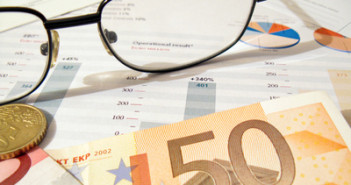EUR/USD showed some strength on Tuesday, gaining about one cent following a dismal Non-Farm Payrolls report. The euro is currently trading close to two-year highs against the dollar. The key employment indicator was nowhere near the estimate and slid to a six-month low. EUR/USD has settled down on Wednesday, and is trading in the mid-1.37 range in the European session. In economic news, Wednesday has a light schedule, with no major releases out of Europe or the US.
Here is a quick update on the technical situation, indicators, and market sentiment that moves euro/dollar.
EUR/USD Technical
- In the Asian session, EUR/USD was steady, touching a high of 1.3793 late in the session and consolidating at 1.3773. The pair is steady in the European session.
- Current range: 1.3710 to 1.3800.
Further levels in both directions:Â 
- Below: 1.3710, 1.3650, 1.3570, 1.3500, 1.3460, 1.3415, 1.3325, 1.3240, 1.3175 and 1.3100.
- Above: 1.3800, 1.3870, 1.3940 and 1.4036.
- 1.3710 has reverted to support. 1.3650 is next.
- 1.3800 is the next line of resistance. 1.3870 is stronger.Â
EUR/USD Fundamentals
- Tentative – German 30-year Bond.
- 12:30 US Import Prices. Exp. 0.3%.
- 13:00 Belgian NBB Business Climate. Exp. -4.1 points.
- 13:00 US HPI. Exp. 0.8%.
- 14:00 Eurozone Consumer Confidence. Exp. -14 points.
- 14:30 US Crude Oil Inventories. Exp. 2.7M.
* All times are GMT.
For more events and lines, see the Euro to dollar forecast.
EUR/USD Sentiment
- Non-Farm Payrolls sends dollar down: There was a lot of anticipation leading up to the release of US Non-Farm Payrolls on Tuesday, as the key indicator had been postponed from early October due to the government shutdown. The markets were in for a big disappointment, as NFP slumped to 148 thousand in September, compared to 169 thousand the month before. This was a six-month low, and was nowhere near the estimate of 182 thousand. The US unemployment rate dipped to 7.2%, a five-year low, but this does not point to increased employment, as the participation rate remained at 63.8%, its lowest level since 1978. These figures indicate that the US labor market continues to have difficulty creating new jobs. The US dollar was broadly lower following the weak NFP reading, and the euro took full advantage, gaining about one cent against the retreating dollar.
- Eurozone inflation remains low: Inflation in the Eurozone continues to be subdued, as underscored by weak German and Eurozone inflation numbers last week. The ECB has stated that its inflation target is “close to, but below 2%â€, but Eurozone CPI releases continue to fall short of this target and the September release came in at 1.1%. The ECB is reluctant to lower interest rates in order to boost inflation, so it seems low inflation will remain until economic growth picks up.
- Debt ceiling averted, but for how long?: There was some optimism and relief last week, as the Republicans and Democrats finally reached an agreement last week to reopen the government and raise the debt ceiling, following weeks of fighting in Congress. However, the deal provides short-term relief only – the government will be funded until January 15, while the debt limit will be raised until February 7. deal provides short-term relief only – the government will be funded until January 15, while the debt limit will be raised until February 7 So we could be right back where we started in just a few months. At the same time, the public is angry at lawmakers for creating the crisis, and with congressional elections only a year away, the politicians on Capitol Hill may think twice before plunging the country into another fiscal and political crisis.
- Fed unlikely to taper QE: The crisis mood in Washington has cleared for now, but the agreement hammered out in Congress provides short-term relief only, as it raises the debt ceiling until early February and funds the government until mid-January. The underlying budgetary issues remain unresolved, and in this unresolved situation, the Fed is unlikely to push the taper trigger until early 2014. Indeed, some Federal Reserve policymakers have openly said that the Fed won’t take any action this year, citing the budget crisis and decreased consumer confidence in the economy.



